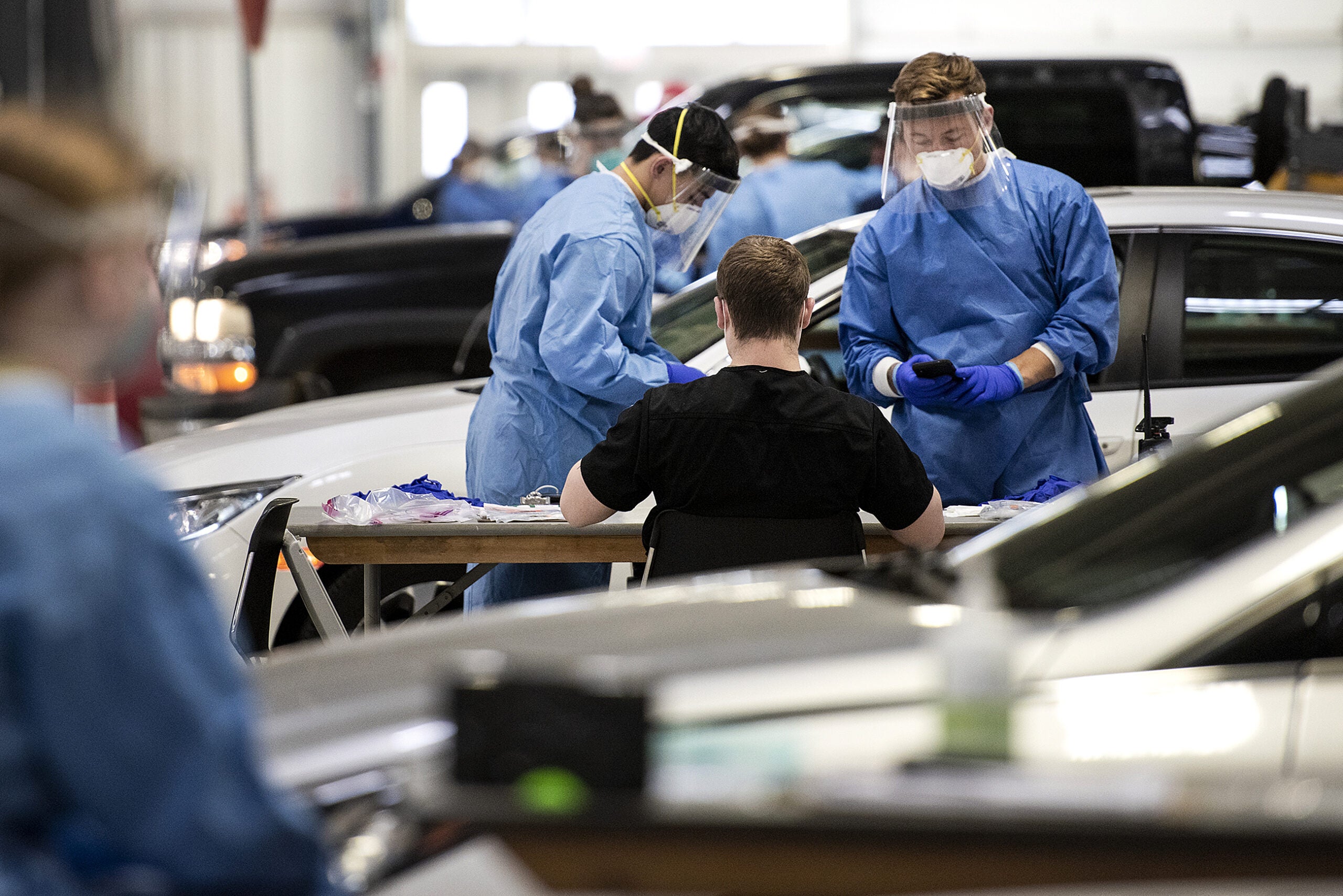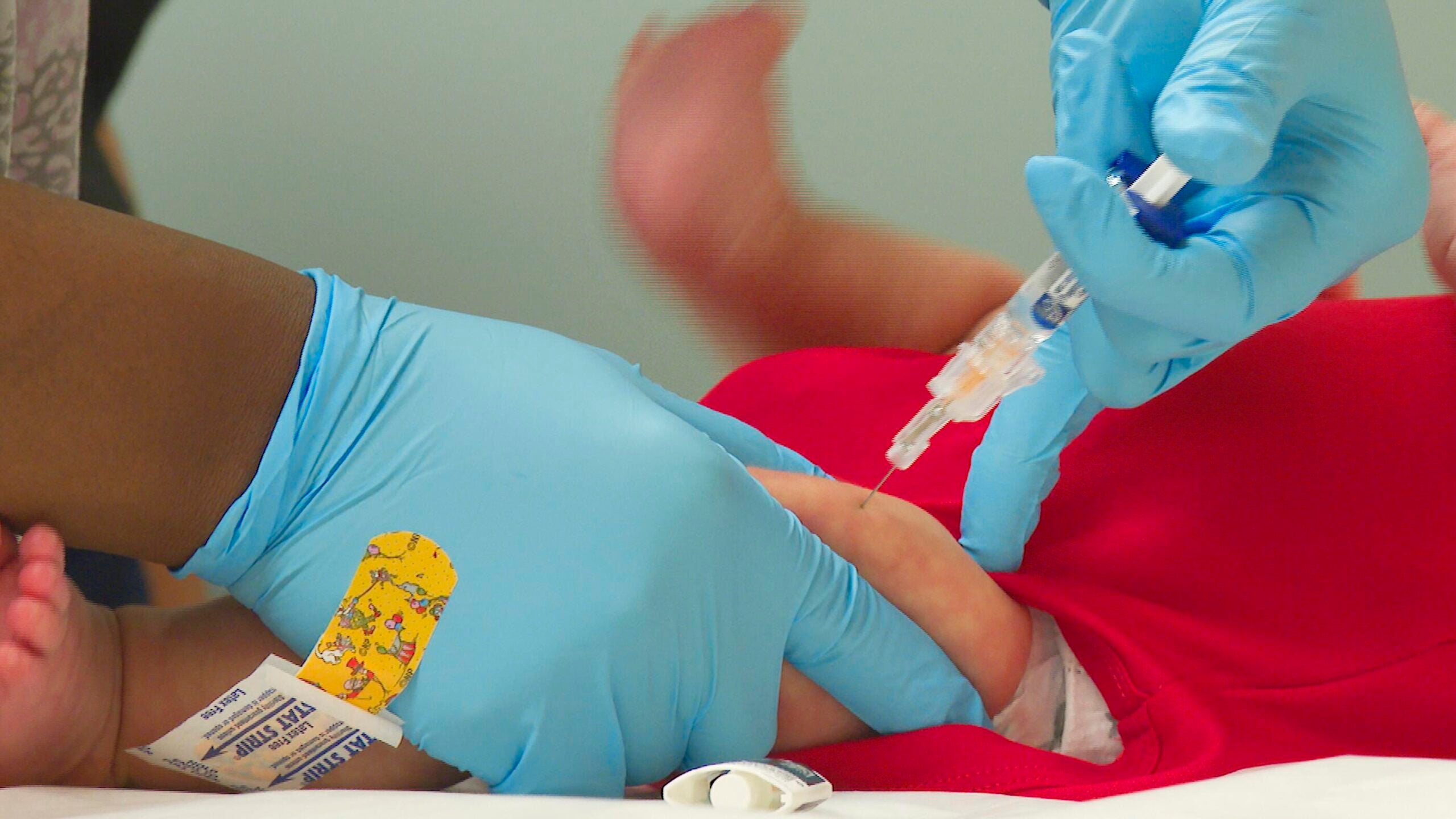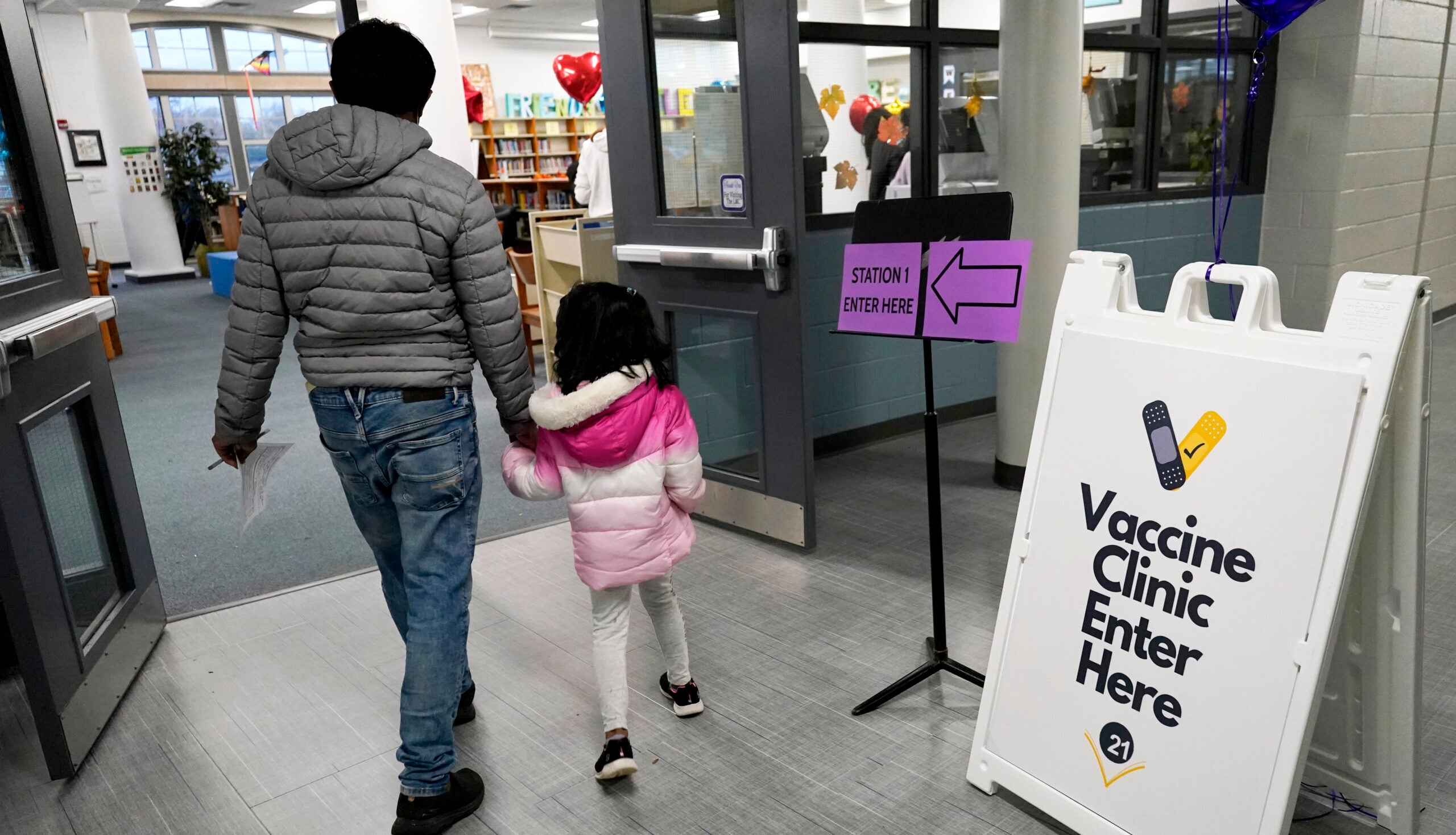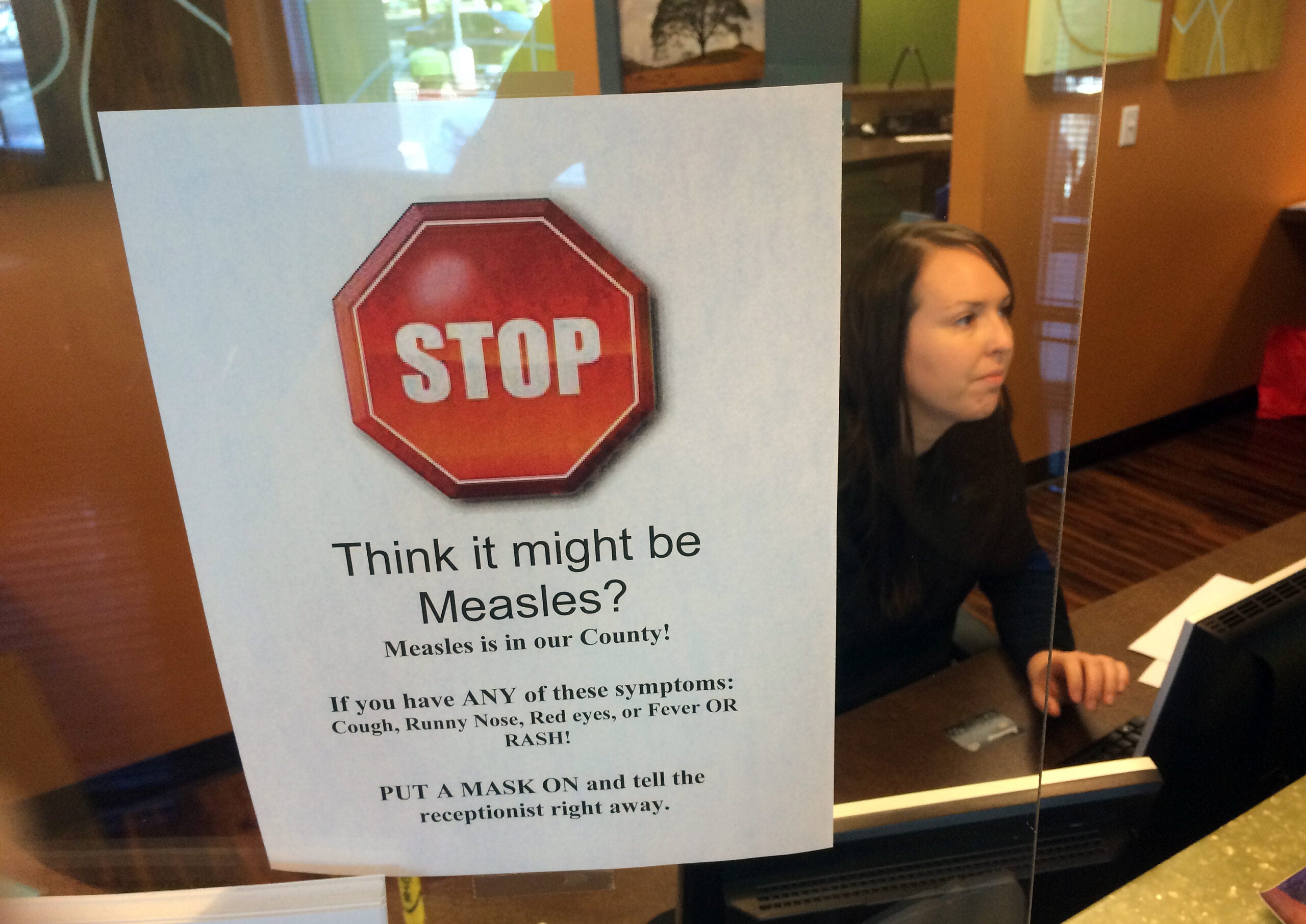Wisconsin is experiencing a spike in new cases of the coronavirus that compares to New York in March or Arizona in June. The state’s accelerating rate of new infections means it likely hasn’t yet reached the peak — and Wisconsin’s situation won’t improve until people change their behavior.
That’s the consensus of public health experts at the end of a September that saw a steep climb in new cases across the state. In the past two weeks, Wisconsin has repeatedly reported record numbers of new infections, its highest-ever positivity rate of tests, highest weekly averages and the highest number of hospitalizations from COVID-19 the state has yet seen.
“It’s bad,” said Ajay Sethi, a public health professor with the University of Wisconsin-Madison, and it’s likely to get worse.
News with a little more humanity
WPR’s “Wisconsin Today” newsletter keeps you connected to the state you love without feeling overwhelmed. No paywall. No agenda. No corporate filter.
The pandemic has been present and spreading throughout the U.S. for months, but hotspots have moved through different regions of the country. In early spring, the first wave in the U.S. hit the East Coast, particularly New York City, the hardest. In the summer, many Southern states saw spikes in new infections, as did Arizona and California.
Now, the same pattern of rapid increase and uncontrolled community spread is hitting the Upper Midwest. The New York Times’ COVID-19 tracking tool shows North Dakota, South Dakota and Wisconsin as the top three states in the nation for growth of new cases per 100,000 people.
“When you look at the epidemic curve and you ignore the … number of cases daily and just look at the shape of the line, we are New York in March,” Sethi said. “We are experiencing rapid rise.”
On Thursday, Gov. Tony Evers warned that the growth represented a “new and dangerous phase” of the pandemic for Wisconsinites. And Evers last week extended the state’s mask mandate through late November.
But the governor’s “Safer at Home” order was thrown out by the state Supreme Court in May, and Republican legislators have declined to implement any statewide public health measures since then. That means bars and restaurants in most communities have been open for months, as have other indoor businesses and gathering places that public health experts say are high-risk for transmitting the virus.
After rising in June and early July, Wisconsin’s new case numbers were relatively flat or declining through late July and August. The state’s mask mandate went into effect Aug. 1.
The statewide spike began in September.
Early in the month, college campuses reported high numbers of new cases. By the week of Sept. 6, the state reported nearly 4,000 infections of people between the ages of 18 and 24. New infections among that group have declined in the last two weeks, according to preliminary state data. Among every other age group in the state, new infections in the same period were the highest they’ve been since the beginning of the pandemic, according to state data. That includes among children under the age of 18, who in some districts began attending in-person classes and participating in extracurricular activities in September.
Dr. Nasia Safdar of UW Health said because young adults tend not to become as severely ill from the virus, they are more likely to spread it.
“From the standpoint of the virus, (18-24-year-olds) is really the perfect group, because if you have mild symptoms, you’re likely not going to want to stay isolated and quarantined,” Safdar said, “and your mobility will allow you to transmit the virus efficiently to other people.”
But it’s not just young adults who caused the spread. Mobility trends measured by Apple and Google, based on cellphone data, show that Wisconsinites are moving around as much now as they were before the pandemic.
The spike “couldn’t have come at a worse time,” Safdar said. “We have all tried to do ‘Safer at Home’ and reduce physical mobility. Now, people are fatigued — and yet now is the time when we most need to do it.”
Another troubling thing about Wisconsin’s September spike, Sethi said, is that it has not yet gotten cold enough to drive most activities indoors. Outdoor activities are markedly lower-risk for transmissions than interactions that happen indoors.
“Because we’re already on the upswing before it gets super-cold, we can only wonder: How bad is it going to get?” Sethi said.
The only way to reverse September’s trends, Sethi said, is for Wisconsinites to change their behaviors. That means staying home when possible, canceling nonessential activities and maintaining vigilance about high-risk activities likely to spread the virus. The experience of other states suggests that Wisconsinites will make these changes if they come to understand that the state’s spike in new cases represents a real risk.
All of Wisconsin’s counties now have high rates of community spread. Some county health departments have said they can no longer keep up with contact tracing of new cases. The surge in hospitalizations has strained the health system in north-central and northeastern Wisconsin.
“This is a serious pandemic,” Safdar said. “The consequences to many people who get sick are pretty dire.”
Wisconsin Public Radio, © Copyright 2026, Board of Regents of the University of Wisconsin System and Wisconsin Educational Communications Board.





